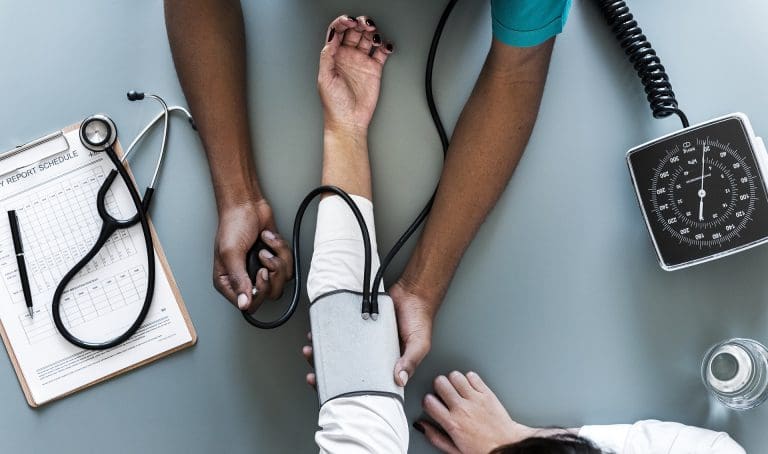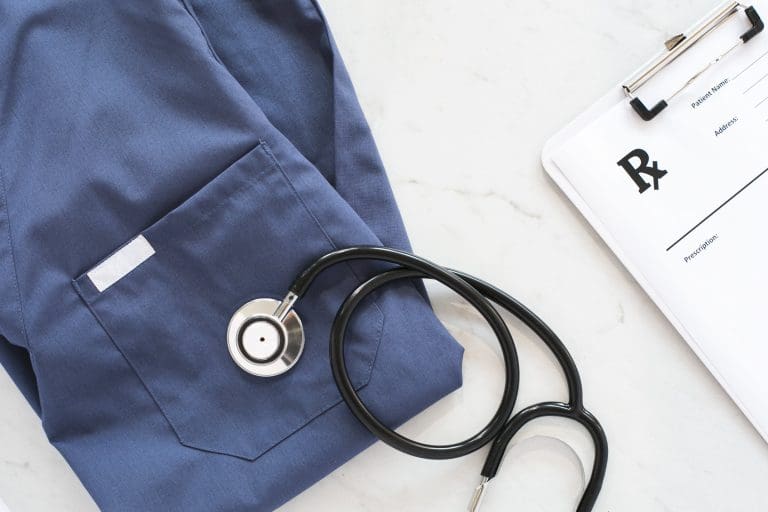CNA Practice Test – Basic Nursing Skills #2
Normal urine color is
Normal urine has a yellow color that ranges from dark yellow to light straw color. Urine that is amber-colored indicates dehydration; more fluids need to be taken. Brown urine can mean severe dehydration or liver disease, and should be checked. Urine that is red-tinted can happen after the client eats some foods, such as beets or blueberries. Red urine can also be a sign of kidney disease, urinary tract infections, or prostrate problems. If urine is colorless, it can mean that the client is over-hydrated and should reduce fluid intake.
Signs and symptoms of shock may include
Signs of shock include low blood pressure (hypotension), a rapid heart rate (tachycardia), a weak pulse, and pale skin which can be damp or clammy. The client may also be breathing rapidly (hyperventilation). The client may also be confused or not alert. Shock is an emergency situation, requiring rapid treatment.
What is the best way of keeping a skilled nursing facility from having an unpleasant odor?
All staff in a skilled nursing facility are responsible for maintaining a pleasant environment. Any source of odor must be dealt with at once. Bedpans and commodes should be emptied and cleaned as soon as the client finishes. All linens should be changed per the facility's policies and as needed. Soiled linens should be transferred to the laundry facilities as soon as possible. Housekeeping can clean the common areas, dining room, and client rooms to prevent odors from food or incontinent episodes.
The brain is part of the
The nervous system has two parts. The brain and spinal cord make the central nervous system (CNS). The peripheral nervous system (PNS) is made up of all the body's nerves, which connect to the CNS. The brain sends messages through the spinal cord and nerves to control the body's muscles and organs. It also processes and interprets the information from both inside and outside the body.
While taking a rectal temperature the nurse aide should insert the thermometer and
A rectal temperature is the most accurate, but needs to be done correctly. After placing the client in Sim's position, lubricate the thermometer and gently insert it about one or two inches into the rectum. Hold the thermometer in place for two minutes to prevent it being pushed out or advancing into the rectum. After withdrawing it, wipe it with a gauze pad, read the temperature, and place the thermometer in the "used" container.
Which of the following should be reported immediately?
A low blood pressure (hypotension) is less than 90/60. Only one of the numbers has to be lower to be considered hypotension. Some clients may have a normal blood pressure in the low range, but if there is a sudden drop from usual, immediately report it to the nurse.
A patient has a diagnosis of psoriasis. Her nurse aide should
Auto-immune diseases are never contagious. They happen when the body's defense (immune) system attacks its own healthy tissue by mistake. Besides psoriasis, other examples of an auto-immune disease are lupus, celiac disease, multiple sclerosis, and type 1 diabetes. Client care is the same as for any other client without an auto-immune disease.
Advertisement
A professional and safe working appearance would include
The nurse aide is considered to be a health care professional and should dress accordingly. Each facility has a dress code policy regarding the type of uniform to wear. Clothing must be clean and free from stains, tears, or wrinkles. Shoes must be closed-toe, with non-skid soles. Appropriate grooming is always necessary. Jewelry is usually limited to a watch and wedding ring, to avoid injuring a client while giving care. A name tag is part of the standard uniform.
The recommended position for giving an enema is
The left Sim's position is used for rectal examinations and administering enemas. The client lies on the left side, with the right knee and hip bent. It is also called the lateral recumbent or semiprone side position.
A major risk factor for a stroke is
Hypertension is the main risk factor for strokes. Other risk factors are diabetes, heart disease, smoking, and a history of strokes or TIAs.
The patient just voided 400cc of cloudy yellow urine that has a strong smell. The patient also complains of pain while urinating. What should you report to the nurse?
When you notice anything unusual, and when a patient complains of pain, always tell the nurse. Urine should be clear and yellow. There should not be pain when urinating. Record your observations in the chart as well as reporting to the nurse.
The nutrient used to build and repair tissue is
Protein is necessary to build and repair bones, muscles, cartilage, skin, and blood. It is also used to make hormones and enzymes.
All of the following are signs of approaching death EXCEPT
As death nears, the heart rate drops, causing many signs: the circulation slows, blood pressure drops, and the extremities become cold. Blood begins to pool on the patient's back and back of the legs. Skin can grow pale. As the lungs work to bring in more oxygen, breathing becomes labored and irregular.
Mrs. Jones is an insulin-dependent diabetic. What task should not be done for Mrs. Jones?
Because diabetics often have neuropathy, or nerve damage, they are unable to detect if their feet are injured. Even trimming toenails can cause an injury. Diabetics need expert care from a podiatrist or a qualified foot care professional. You could be held liable if the client developed an infection after you cut her toenails.
Advertisement
A normal adult blood pressure is
The American Heart Association guidelines state that a normal blood pressure for an adult is a systolic pressure of less than 120 and diastolic less than 80. Prehypertension levels are a systolic pressure of 120-139 and diastolic of 80-89. Hypertension begins at a systolic pressure of 140 or higher and diastolic of 90 or higher.
The admission process includes all EXCEPT
The CNA can obtain objective information such as vital signs, height and weight, or observing a patient's skin, but cannot do an assessment. The RN is able to do a physical assessment as part of the nursing diagnosis and report findings to the MD.


